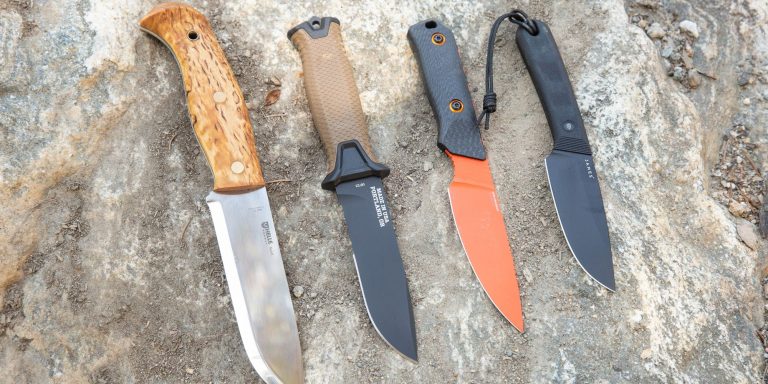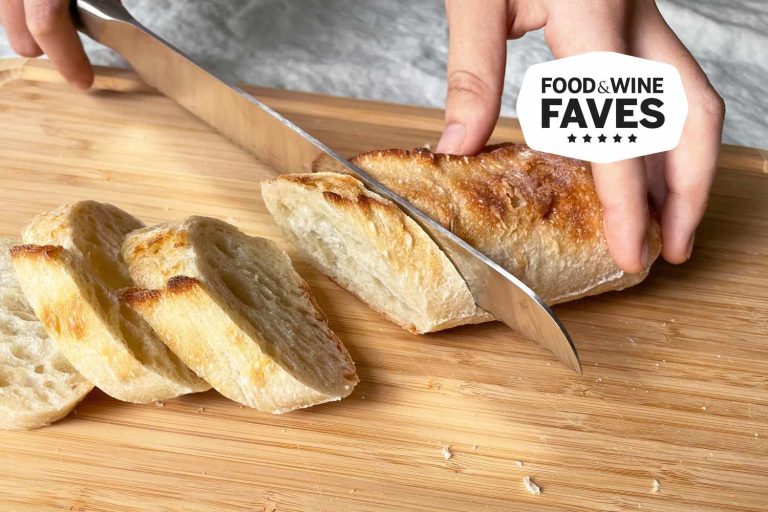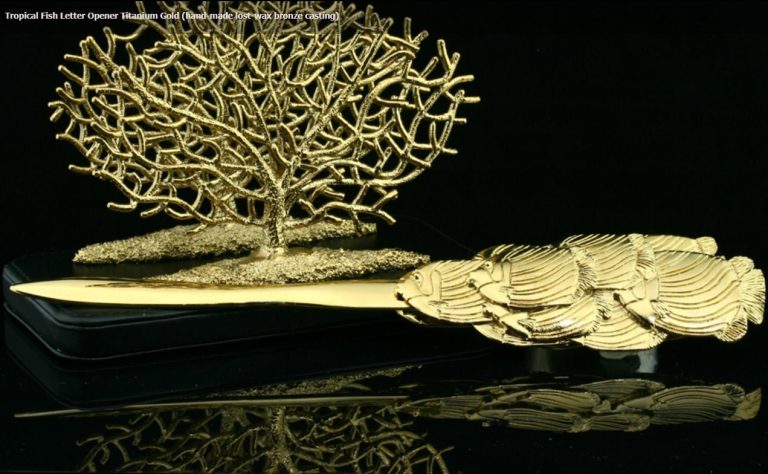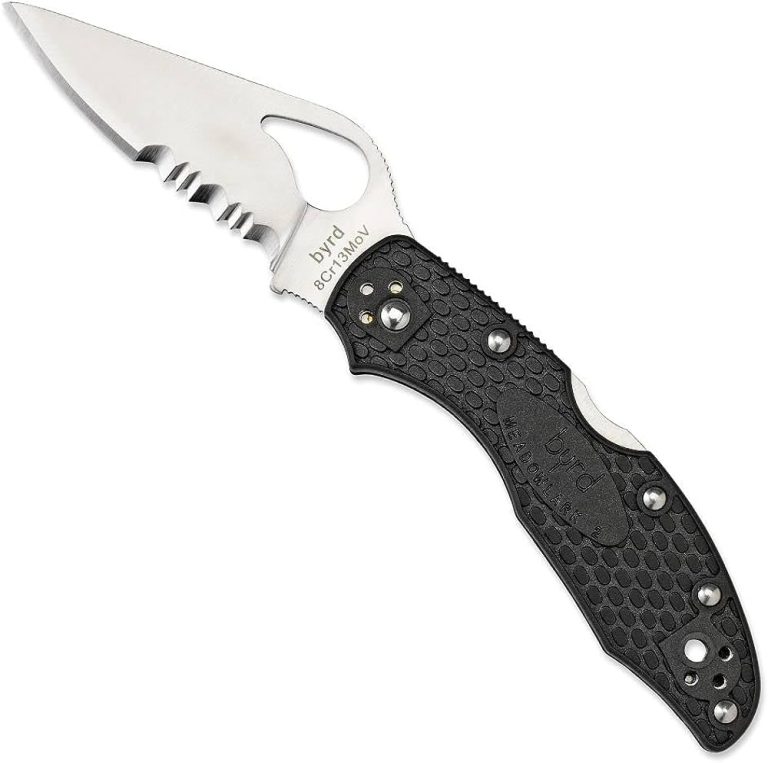Which Knife is Mostly Used?
The chef’s knife is the most commonly used knife in the kitchen due to its versatility and functionality. With its broad blade and sharp edge, it can handle various tasks such as chopping, slicing, and dicing ingredients with precision and ease.
Whether you’re a professional chef or a home cook, the chef’s knife is an essential tool that simplifies your cooking process and allows for efficient meal preparation. Its ergonomic design and comfortable grip make it a popular choice for both beginners and experienced cooks.
Choose a high-quality chef’s knife that suits your preferences and needs, and you’ll find yourself reaching for it time and again in the kitchen.
Types Of Knives
One of the most widely used types of knives is the chef’s knife, renowned for its versatility and functionality in the kitchen. With its sharp, curved blade, it can handle various tasks, from slicing and dicing to chopping and mincing, making it an essential tool for both amateur and professional chefs.
Chef’S Knife
The chef’s knife is a versatile and all-purpose knife that is essential in every kitchen. With its broad blade and curved edge, it is perfect for chopping, slicing, and dicing a wide variety of ingredients. Whether you’re preparing vegetables, meats, or fish, the chef’s knife can handle it all.
Here are some key points about the chef’s knife:
- The chef’s knife is designed for efficient and precise cutting, making it the go-to knife for professional chefs and home cooks alike.
- Its long, sharp blade allows for easy slicing through ingredients, while its curved edge enables a rocking motion for effortless chopping.
- The chef’s knife typically ranges in size from 6 to 12 inches, with the most popular size being 8 inches.
- It is crafted with a sturdy handle that provides a comfortable grip, allowing for extended use without causing hand fatigue.
- The chef’s knife is a must-have in any kitchen, as its versatility makes it suitable for a wide range of culinary tasks.
Paring Knife
When it comes to precise and intricate work in the kitchen, the paring knife is the perfect tool to have on hand. Its small, narrow blade and pointed tip make it ideal for tasks that require utmost precision. Here are some important details about the paring knife:
- The paring knife excels in tasks such as peeling, trimming, and slicing small fruits and vegetables.
- Its compact size allows for greater control and maneuverability, making it suitable for delicate tasks that require finesse.
- The sharp blade of the paring knife ensures clean and accurate cuts, resulting in beautifully presented dishes.
- This knife is also useful for creating decorative garnishes or removing blemishes from produce.
- The paring knife is a must-have for any cook who appreciates attention to detail and precision in their culinary creations.
Bread Knife
A bread knife is a necessity in every kitchen, especially if you enjoy baking or have a penchant for crusty bread. Its unique serrated blade is specifically designed to cut through crusts without crushing delicate interiors. Here are some key points to know about the bread knife:
- The serrated blade of the bread knife allows for clean and effortless cuts through crusty bread, ensuring neat slices without squishing the loaf.
- In addition to its primary function, the bread knife is also useful for slicing cakes, delicate pastries, and other baked goods.
- The serrations on the blade act like small teeth, gripping the surface of the food and enabling the knife to smoothly glide through, even with minimal pressure.
- The length of a bread knife typically ranges from 8 to 10 inches, providing enough reach to cut through larger loaves of bread.
- Whether you’re an avid baker or simply enjoy a good loaf of bread, the bread knife is an indispensable tool in the kitchen.
Remember, when it comes to knives, having the right tools for the job can greatly enhance your culinary experience. The chef’s knife, paring knife, and bread knife are three essential knives that cover a wide range of kitchen tasks. With these versatile knives at your disposal, you’ll be well-equipped to handle any culinary challenge that comes your way.

Credit: www.reddit.com
Kitchen Knife Materials
The most commonly used kitchen knife material is stainless steel due to its durability and resistance to corrosion. Stainless steel knives are easy to maintain and provide a sturdy cutting edge for efficient food preparation.
When it comes to kitchen knives, there are different materials used in their construction that can greatly impact their performance and durability. In this section, we’ll explore the three most commonly used kitchen knife materials: stainless steel, carbon steel, and ceramic.
Each material offers its own unique qualities and advantages, making them suitable for different purposes in the kitchen.
Stainless Steel Knives:
- Stainless steel knives are highly popular and widely used in both professional and home kitchens due to their excellent properties.
- Resistant to rust and corrosion: Stainless steel knives have a high resistance to rust and corrosion, making them ideal for use in a kitchen where moisture and various food ingredients are present.
- Easy to maintain and clean: These knives are easy to maintain and clean. They require minimal effort to keep them in top condition and can be easily wiped clean after use.
- Versatile and durable: Stainless steel knives are known for their versatility. They can be used for a variety of cutting purposes and are highly durable, lasting for a long time with proper care.
Carbon Steel Knives:
- Carbon steel knives are renowned for their strength, durability, and the fine edges they can achieve.
- Strong and durable: Carbon steel knives are incredibly strong and durable, able to withstand heavy-duty applications in the kitchen. They can handle tough cutting tasks with ease.
- Sharpened to a fine edge: These knives can be sharpened to achieve an exceptionally fine edge, resulting in precise and effortless cutting performance.
- Requires special care: However, it’s important to note that carbon steel knives require special care due to their susceptibility to rust. They need to be dried immediately after use and periodically oiled to maintain their condition.
Ceramic Knives:
- Ceramic knives are gaining popularity among chefs and home cooks for their lightweight nature and long-lasting sharpness.
- Lightweight and precise: Ceramic knives are incredibly lightweight, which makes them easy to handle and maneuver. This lightweight feature enhances precision and reduces wrist fatigue during extended periods of use.
- Retain edge sharpness for a long time: Ceramic knives are known for their ability to retain their sharpness for a longer period compared to stainless steel or carbon steel knives. This means less frequent sharpening is required.
- Fragile and limited versatility: However, it’s important to note that ceramic knives are more fragile than their steel counterparts and can chip or break if mishandled. They also have limited versatility and are best suited for slicing fruits, vegetables, and boneless meats.
The choice of kitchen knife material boils down to personal preference and the specific tasks you intend to tackle in the kitchen. Stainless steel knives are a versatile option that is easy to maintain, while carbon steel knives offer superior strength and sharpness.
Ceramic knives, on the other hand, provide lightweight precision and edge retention. Consider your needs and priorities to select the perfect kitchen knife material for your culinary adventures.
Factors To Consider
One knife that is widely used is the chef’s knife due to its versatility and ability to handle a variety of tasks in the kitchen. Consider factors such as blade material, size, and handle comfort when choosing the most suitable knife for your needs.
Blade Length
The blade length of a knife plays a significant role in determining its functionality for different tasks. Here are some key points to consider when it comes to blade length:
- Longer blades, typically between 8 and 10 inches, are ideal for slicing and chopping larger ingredients, such as roasts or watermelons. The lengthier blade allows for better control and precision during these tasks.
- Shorter blades, around 4 to 6 inches, are commonly used for more delicate tasks like peeling or trimming small fruits and vegetables. The compact size provides better maneuverability and allows for intricate cuts.
- For everyday kitchen use, a versatile blade length of 6 to 8 inches is recommended. This range provides a balance between handling different ingredients and intricate tasks.
Blade Shape
The shape of a knife’s blade greatly influences its functionality. Here are a few common blade shapes and the tasks they excel at:
- Chef’s Knife: The most versatile blade shape, perfect for chopping, slicing, and dicing. Its curved edge allows for a rocking motion while cutting.
- Serrated Knife: The serrated edge is ideal for slicing through foods with tough exteriors, like bread or tomatoes. The teeth grip the surface, creating clean and effortless cuts.
- Paring Knife: With a small, pointed blade, paring knives are perfect for precision tasks such as peeling, trimming, and mincing.
- Santoku Knife: This Japanese knife combines the functions of a chef’s knife and a cleaver. Its wide blade and granton edge make it great for slicing, dicing, and chopping.
Handle Design
The handle design of a knife is crucial for comfort, grip, and overall ease of use. Consider the following factors when selecting a handle design:
- Ergonomics: Look for a handle that fits comfortably in your hand. Consider the shape, weight, and grip texture to ensure a secure and comfortable grasp.
- Material: Knife handles can be made of various materials, such as wood, plastic, or stainless steel. Each material comes with its own benefits, so choose one that suits your preferences and provides a reliable grip.
- Tang: A full-tang knife has a blade that extends through the handle, offering better balance and durability. On the other hand, a partial tang might be suitable for lighter tasks.
Remember to take into account personal preferences, hand size, and the tasks you frequently perform in the kitchen when selecting a knife handle design.
With these factors in mind, you can make an informed decision about which knife to choose for your specific needs. Whether it’s the blade length, shape, or handle design, each aspect contributes to the overall functionality and usability of the knife.
So, take your time, test different options, and find the perfect knife that will become an indispensable tool in your kitchen.
Taking Care Of Your Knives
The most frequently used knife for everyday tasks is the chef’s knife. It offers versatility, with a sharp blade that handles cutting, slicing, and chopping various ingredients effortlessly. Regular maintenance and proper care ensure the knife’s longevity and performance.
Taking care of your knives is essential to ensure their longevity and maintain their optimal performance. Proper storage techniques, preventing damage and accidents, regular cleaning and maintenance, as well as sharpening and honing techniques, all play a significant role in enhancing the lifespan of your knives.
In this section, we will explore these aspects to help you take care of your knives effectively.
Proper Storage Techniques:
- Knife blocks: Using a knife block is a popular option for storing knives. It not only keeps your knives organized but also protects the blades from dulling or chipping. Make sure the blades are inserted into the slots with care to avoid any potential accidents.
- Magnetic strips: Magnetic strips offer a space-saving storage solution. They allow you to easily access your knives while keeping them safely stored and out of reach from children.
- Blade guards: Blade guards are protective covers that can be used to store individual knives. They are particularly useful for safe storage when traveling or when knives are not frequently used.
Preventing Damage And Accidents:
- Avoid cutting on hard surfaces: Cutting on hard surfaces like granite, glass, or metal can damage the knife’s edge. Always use a cutting board made of wood, plastic, or bamboo to preserve the sharpness of your blade.
- Proper cutting technique: Using the correct cutting technique not only ensures efficient slicing and dicing but also minimizes the risk of accidents. Hold the knife securely, curl your fingers under, and keep the blade’s motion controlled and consistent.
- Avoid prying or twisting: Knives are designed for cutting, not prying or twisting. Applying excessive force or using the knife for tasks it is not intended for can result in blade damage or even injuries.
Regular Cleaning And Maintenance:
- Handwashing vs. Dishwasher: Handwashing is generally recommended for knives to prevent any potential damage caused by harsh dishwasher detergents or high temperatures. Rinse your knives immediately after use, gently scrub with a mild detergent, and always dry them thoroughly to avoid rust or corrosion.
- Storing clean and dry: Always ensure your knives are completely dry before storing them. Moisture can lead to rust or bacterial growth, which may compromise the quality of your knives over time.
Sharpening And Honing Techniques:
- Honing: Honing should be done regularly to maintain the sharpness of the blade. Using a honing steel, hold the knife at a 20-degree angle and glide the blade across the steel in a sweeping motion. Repeat on both sides of the blade several times.
- Sharpening: Sharpening knives removes material from the blade to create a new edge. It is recommended to use a sharpening stone or a professional knife sharpener. Follow the manufacturer’s instructions and take care not to apply excessive pressure, as it can damage the knife.
Taking care of your knives is crucial for their longevity and performance. By following proper storage techniques, preventing damage and accidents, regular cleaning and maintenance, as well as sharpening and honing techniques, you can ensure that your knives remain in excellent condition and provide you with years of reliable use.
Frequently Asked Questions On Which Knife Is Mostly Used?
What Are The Most Common Types Of Knives Used?
The most common types of knives used include chef’s knife, paring knife, Santoku knife, bread knife, and utility knife.
What Knife Is Used For All Purpose?
The chef’s knife is the all-purpose knife you need for all your kitchen tasks.
What Is The Second Most Used Knife?
The second most used knife is the paring knife, known for its versatility and precision.
What Kind Of Knife Is Commonly Used In Cutting?
The commonly used knife for cutting is a chef’s knife.
Conclusion
After examining various types of knives commonly used in different culinary tasks, it is clear that the chef’s knife is the most versatile and widely used kitchen tool. With its strong and sharp blade, this all-purpose knife excels in both precision and efficiency when it comes to slicing, dicing, and chopping ingredients of all sizes.
Its ergonomic design provides a comfortable grip, allowing for prolonged use without causing hand fatigue. Whether you’re a professional chef or a home cook, the chef’s knife proves to be a reliable companion in the kitchen. However, it is important to choose a high-quality knife that suits your needs and preferences.
Regular maintenance and proper storage will also ensure the longevity and effectiveness of your knife. So, whether you’re preparing a simple dinner or experimenting with complex recipes, the chef’s knife should be your go-to tool for all your cutting needs.







Great post. I was checking continuously this blog and I am
impressed! Very helpful info specifically the last part 🙂
I care for such info a lot. I was looking for this certain information for a long time.
Thank you and best of luck.